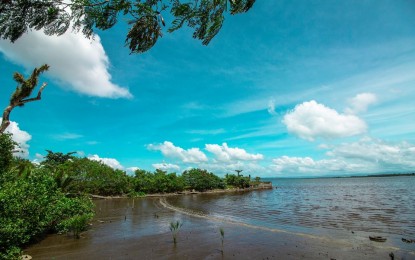
RED TIDE-FREE. A portion of Cancabato Bay in Tacloban City in this undated photo. The Bureau of Fisheries and Aquatic Resources said Wednesday (Feb. 22, 2023) that the bay is cleared of red tide toxins. (Photo courtesy of Camera ni Juan Photography)
TACLOBAN CITY – The Bureau of Fisheries and Aquatic Resources on Wednesday cleared the Cancabato Bay in this city from the toxic red tide after three months of bloom.
In its advisory, BFAR said the gathering, trading and consumption of shellfish from Cancabato Bay can now resume after the ban imposed in November 2022.
“Shellfishes in Cancabato Bay are now safe for human consumption. Negative results for paralytic shellfish poisoning were obtained from three consecutive weeks of sampling in the area,” BFAR said in a statement on Wednesday.
Cancabato Bay is a rich source of cockle clams being shipped to Taiwan and Hong Kong.
BFAR said the red tide in Cancabato was triggered by high concentrations of nutrients; changes in environmental conditions like water temperature, salinity, or light intensity; or physical concentration in the area due to local patterns in water circulation.
Nutrients can become run-off waste from the city’s coastal communities, according to BFAR.
While Cancabato Bay has been cleared, the phenomenon remains in San
Pedro Bay in Basey town in Samar province under Shellfish Bulletin No. 05 issued on Feb. 22, 2023, by the BFAR main office.
The change in weather patterns has been blamed for the red tide presence in the region, according to BFAR.
Fish, squid, crab, and shrimp gathered from these areas are safe to eat provided that all entrails are removed and the marine products are washed thoroughly with running water before cooking.
BFAR asked local government units to heighten their watch against the gathering, trading, and consumption of shellfish to prevent the incidence of paralytic shellfish poisoning (PSP), which can occur minutes after ingesting bivalve shellfish (such as mussels, oysters, and clams) that contain red tide toxins.
Early PSP symptoms include tingling of the lips and tongue and may progress to tingling of fingers and toes and then loss of control of arms and legs, followed by difficulty in breathing.
Red tide is a term used to describe a phenomenon where the water has discolored by high algal biomass or a high concentration of algae. (PNA)
